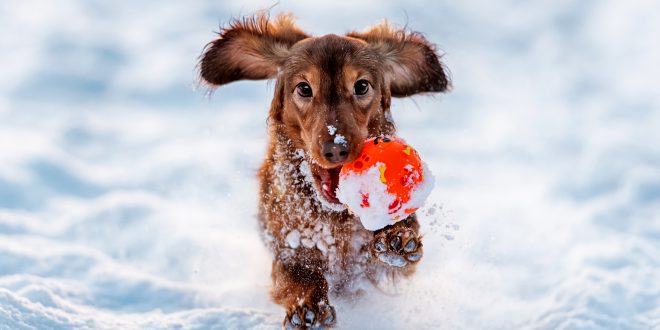(SCHAUMBURG, Illinois) January 18, 2019—With a large winter storm in the forecast for much of the United States, it’s important to take steps to prevent slips, falls and injuries from ice–not just among people, but among our four-legged friends as well. This may include the use of de-icers to keep sidewalks, steps, driveways and roads clear of ice.
While these de-icers pose some risks to our pets, so does the ice; in addition to the risk of slips and falls, ice and icy crust on snow can cause cuts and abrasions to your dog’s paws, or it could contain embedded objects that could be harmful if stepped on. It is important to mitigate all of these risks so you and your dogs (and your neighbors and their dogs) can get out for some fresh air and exercise in the snowy winter weather.
When using de-icers, understand that all of these products have the potential to harm your pets or make them ill. Some, like calcium-based products, may be more toxic, while others, like those containing urea, might be less toxic, but also less effective in colder temperatures. Most of these products are relatively safe and may cause nothing more than an upset stomach or mild skin irritation. Too much contact or ingestion could lead to dry, cracked, bleeding or burned paws, or diarrhea and vomiting. Call your veterinarian if your pet shows signs of illness or injury.
One important note: While de-icers labeled as “pet-friendly” may actually be safer (i.e., less toxic ingredients, less jagged pellets), there is no requirement that products marketed as such meet any agreed-upon standards. Your best source of information for pet-friendly de-icers is your veterinarian.
Be sure to limit your use of chemical de-icers to their recommended application amount, and don’t simply apply it and forget it; after the product melts the ice, use a shovel to clear the area of slush and salt.
To lessen the risk of de-icers, always supervise your dogs while outside to prevent them from ingesting salt off the ground. When returning home, use a towel to clean off your dog’s paws, legs and belly and remove any de-icers that may be hitching a ride in your dog’s fur or between their toes. Check paws for any signs of irritation, cuts or swelling.
You can also reduce the risk of injury or illness from de-icers by putting booties on your dog’s paws. Every dog reacts differently and it may take patience and training to make booties part of your winter routine. You can also apply wax-based petrolatum or lanolin products to protect paws from ice and cold–just talk with your veterinarian first to determine which products might be best for your dog.
For those who do not want to use de-icers, products such as sand or kitty litter can provide some additional traction on icy surfaces, but it won’t melt the ice.
While the urge to hibernate is understandable in the winter months, it’s important that you and your dogs get outside for some exercise, fresh air, and playtime together, even in the cold and snow. To learn more about keeping your pets safe while still enjoying the snowy weather, visit the AVMA website at avma.org/ColdWeather.






